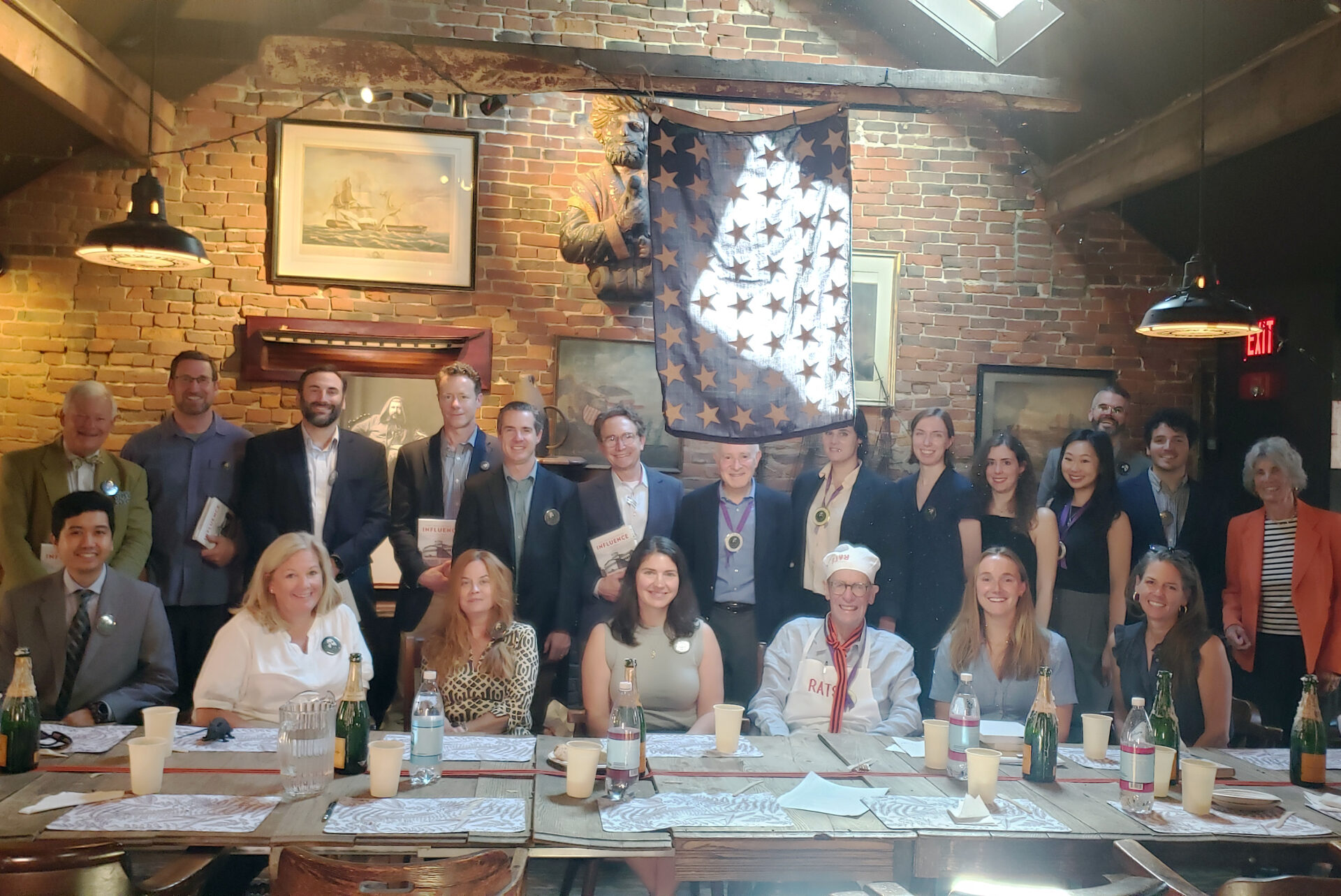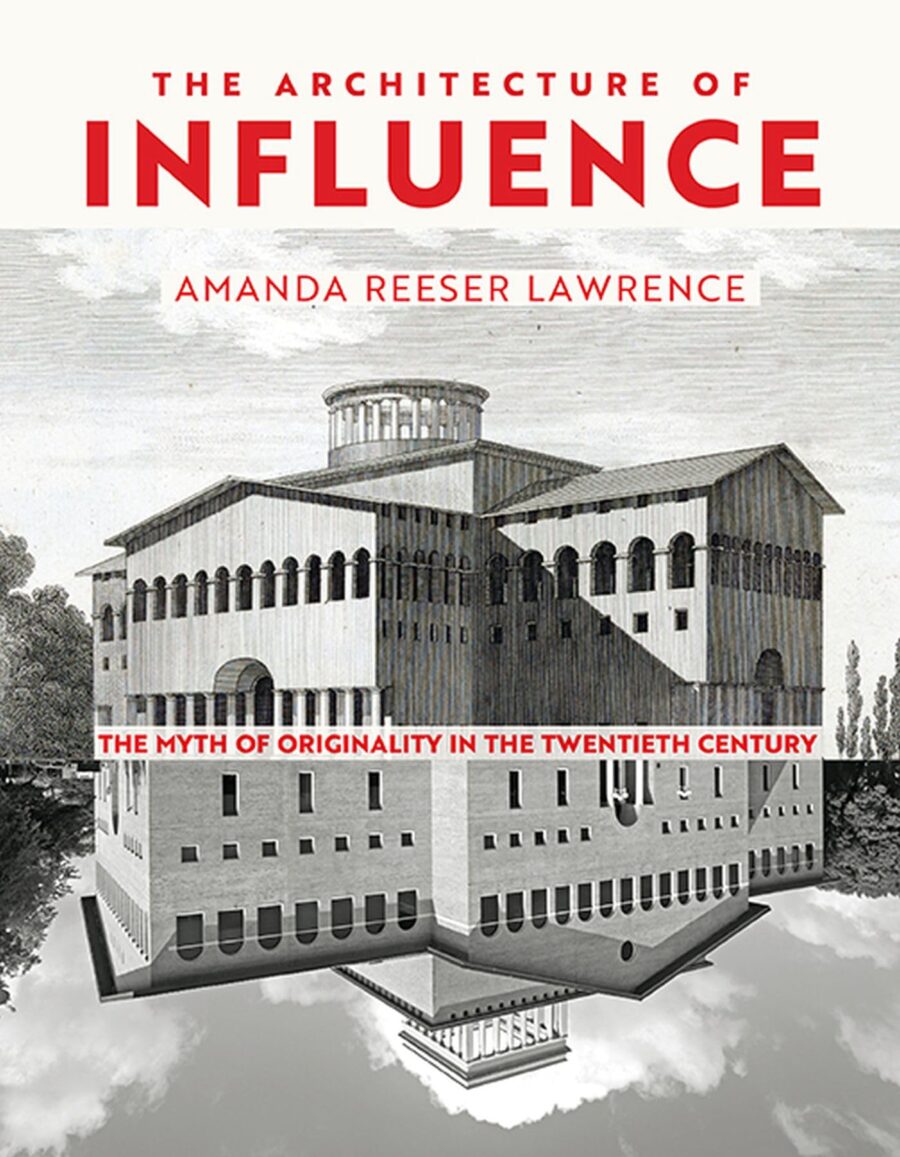BOOK REVIEW - The Architecture of Influence:
The Myth of Originality in the Twentieth Century by Amanda Reeser Lawrence
The ART office library is inseparable from our design process as a resource that grows as it is mined. Last summer, Jim Righter contributed to our collective libraries with Amanda Reeser Lawrence’s book The Architecture of Influence: The Myth of Originality in the Twentieth Century. We were all given copies and he proposed we read and discuss at our annual celebration Henry Hobson Richardson’s birthday with Prof. Lawrence as our special guest.
Her book collects many interwoven relationships of influence throughout twentieth century western architectural practice. The case studies compellingly investigate the origins of architectural ideas and illustrate how new concepts are inherently in conversation with the past. The book is structured into seven categories: replicas, copies, compilations, generalizations, revivals, emulations, and self-repetitions. As Lawrence writes, these categories of influence “establish mechanisms for exploring meaningful differences in the way history is rearranged”. For an architect, Lawrence’s book provides a framework for our motivations to look back for design opportunities.
At our office, re-reading our architectural past is integral and inevitable. We collect our influences through drawing and travel and careful notation. And we synthesize these channels of design to embrace varying needs and personal influences. Lawrence writes that Charles Moore’s use of influence is “a strategy for dealing with the cacophony of modern life”. She quotes Moore, that instead of selecting from our inundation of influences, “we have to transform them in our vision, absorb them into our whole selves, and then create, not from a fragment of our experience, but from the whole thing”. This is a poignant thought when designing homes. It is gratifying to imagine we can produce a coherent idea that siphons from disparate and competitive realities.
Drawing is an active part of this process and we learn from architecture by carefully tracking lines by hand. But by drawing, we are making choices – editing, emphasizing, absorbing and reconceiving the subject for the present. And we may, consciously or not, claim what we draw as part of our own process. Details may be isolated from context or an idea may be generalized as we draw. But by doing so, we reframe them for the present. As Lawrence writes, the referent is “retroactively defined through the act of reference”. She notes this relationship between drawing and influence for Louis Kahn. Works relate to a precedent because both are part of a larger architectural idea, rather than one directly derived from another. When we make drawings of the architecture we love again and again, we may find different things each time. It is also useful to see that when we draw from many subjects, we may arrive at the same place.
The subject of influence also reinforces the collaborative nature of architecture as we look around ourselves to provide well-suited designs that respond to physical context. Books lay open as we draw. We gather around each other’s desks to flip through photographs, identifying sympathetic roof forms and window seats and porch rails. We are reminded of a detail we drew on a trip and sift through our archives. As laid out in Lawrence's book, all new architecture is part of a greater narrative. And what we design will be in a dialogue with form and language of a place. We can consciously and confidently participate in this conversation. In our work, we confront challenges through reference to our library and our sources can act as an extension of our own thought. We design through the architecture that influences us, establishing new opportunities within the work of others.
At our office, we pin up our travel drawings, share photos from recent trips, and organize visits to sites that inspire our work. We all participate in developing a treasured vault of influence from which we pull as we design for contemporary lives. It was a pleasure to read Lawrence’s accounts of architectural influence and be newly emboldened to recollect and redefine the past.

